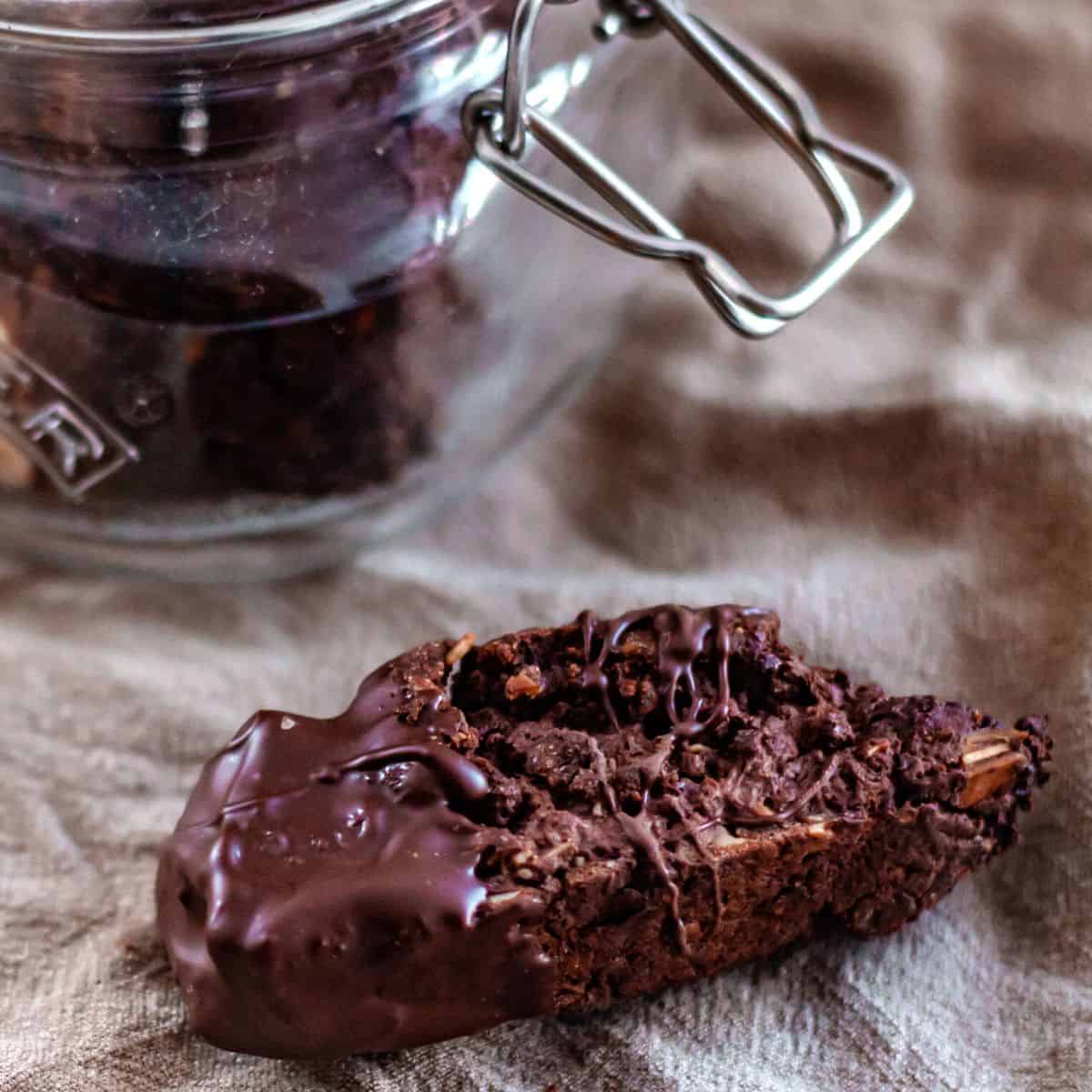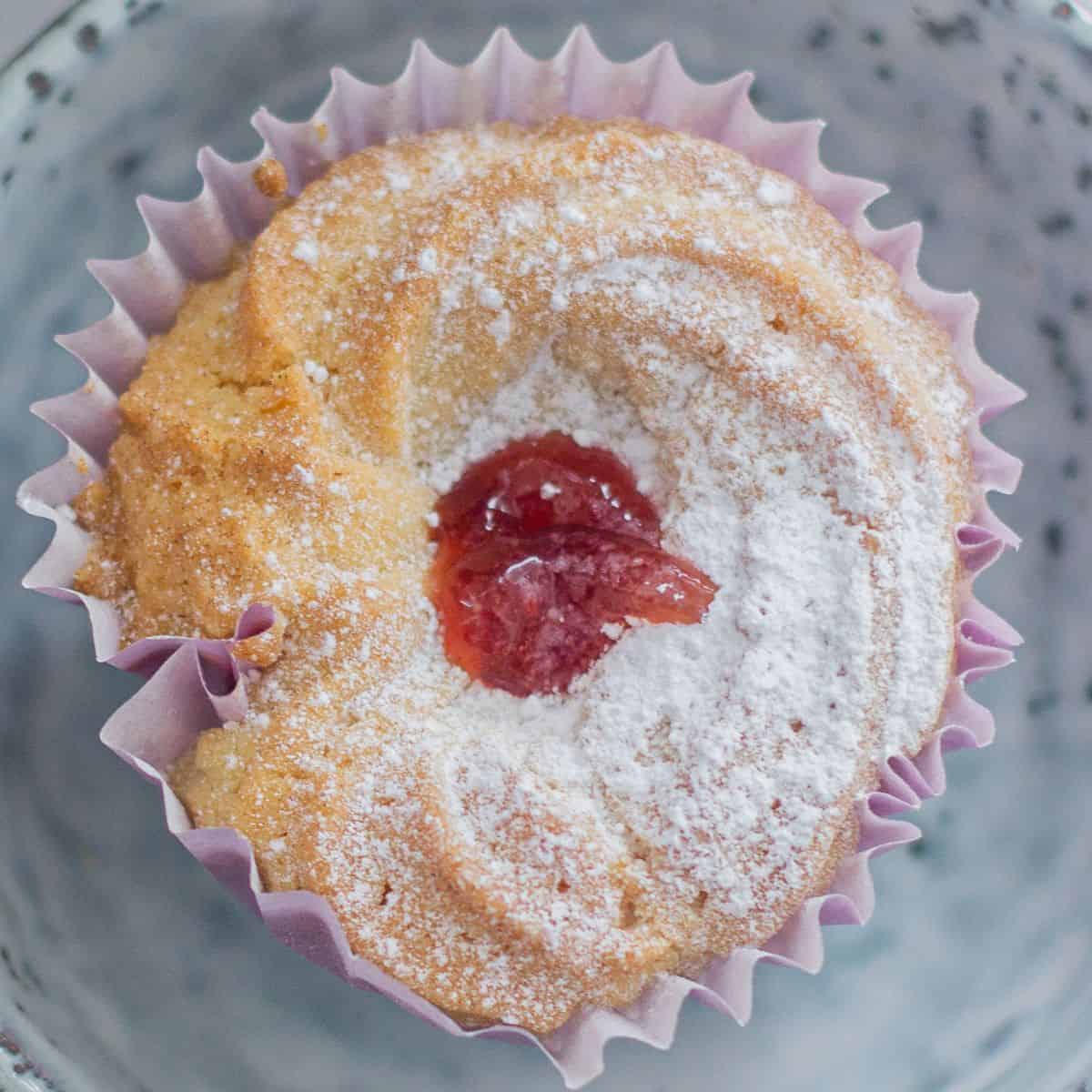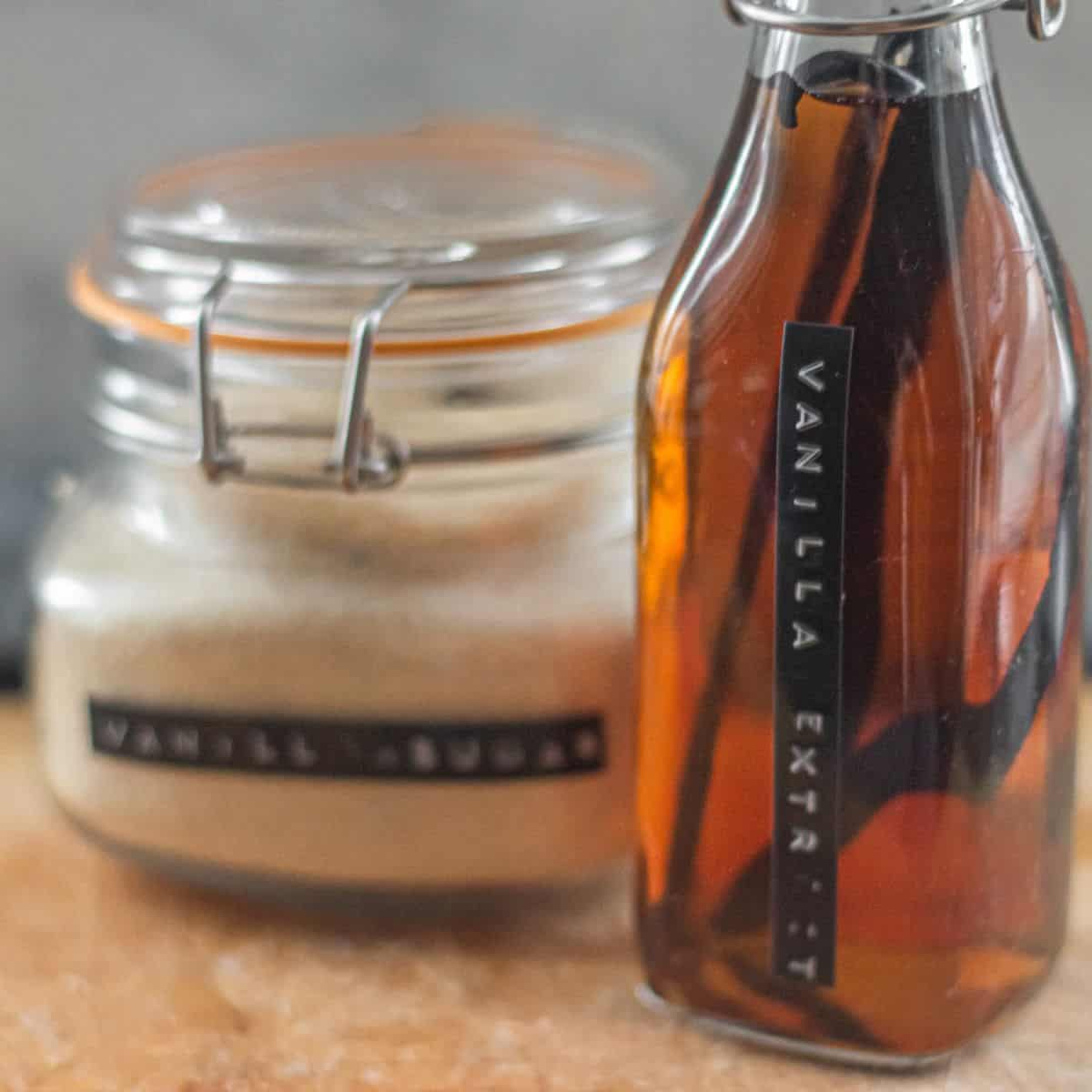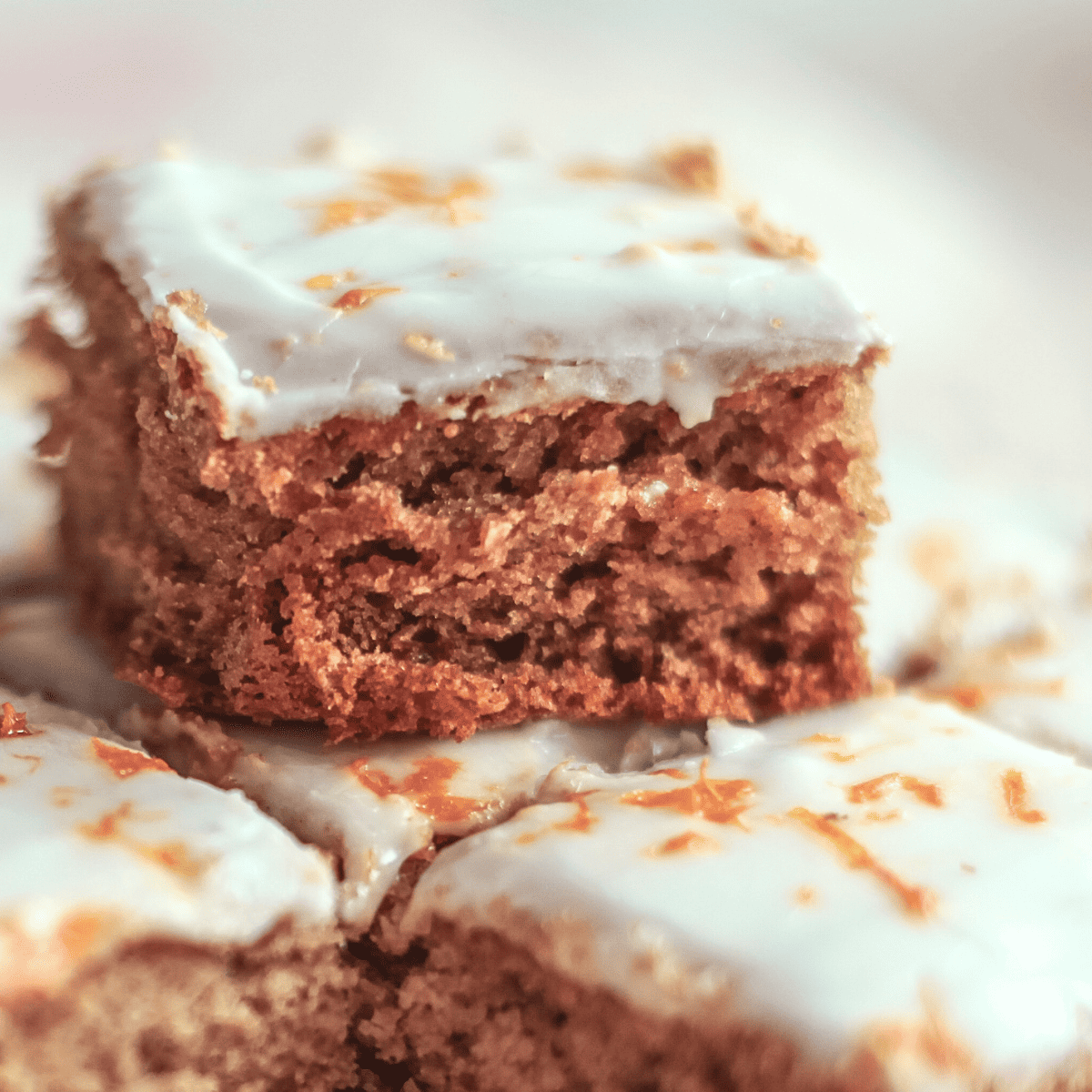A Quick Guide to Egg Replacers
Are you looking for egg replacers for your vegan recipes? Look no further! In this simple guide, we will walk you through various substitutes that can be used in place of eggs in your favorite dishes. Whether you need an egg replacement for baking, binding, or adding moisture, we’ve got you covered. Discover the versatility of vegan egg replacers and start exploring new culinary horizons today!
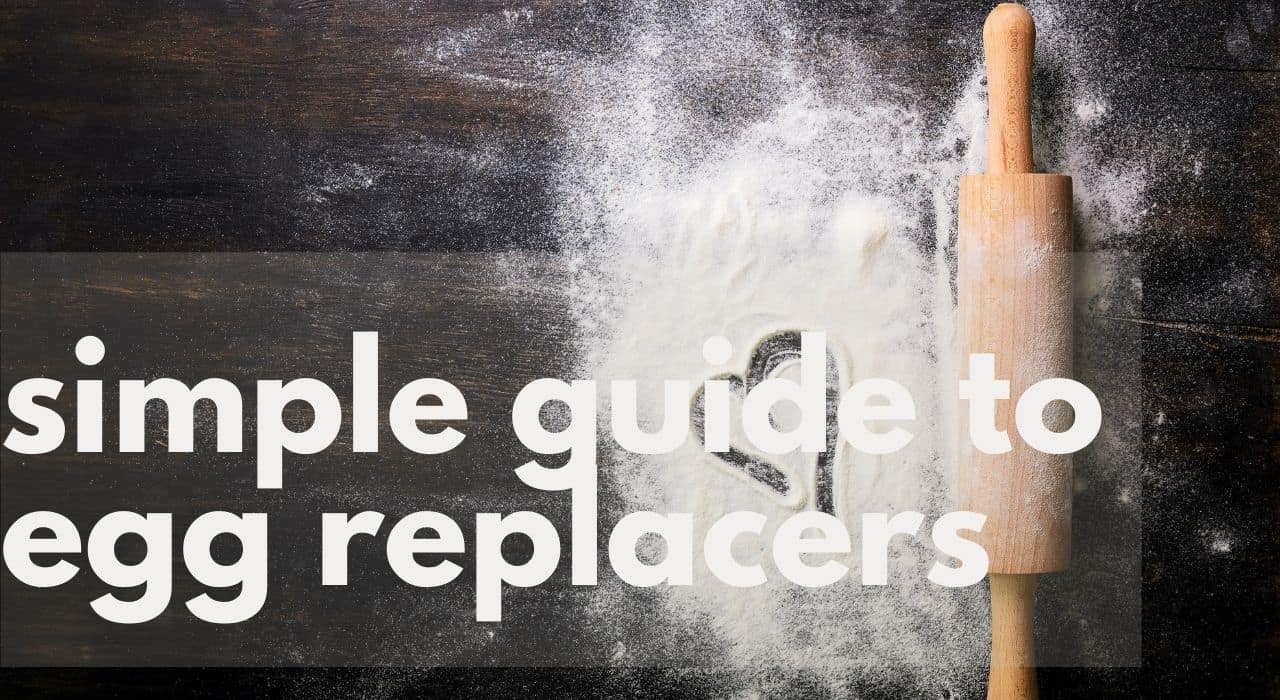
Table of Contents
What Are Vegan Egg Replacers?
Simply put, vegan egg replacers can be anything from yogurt to applesauce or bananas, to ground flaxseed to chickpea juice (aka aquafaba). In addition, you can also buy powdered egg replacers. These generally are mixture of starchy flours and baking powder, that, when combined with water, give a (sort of) egg-like texture and binding quality to baked goods. They are just an egg alternative.
Eggs provide several essential benefits to baking including adding air, working as a binder and giving baked products structure. So how do we replace them?
In this post, I’m going to briefly discuss the pros and cons of various egg replacers, how to use them and in what kind of baked products, along with suggesting some recipes. I’ve also suggested some of my favourite egg replacers.
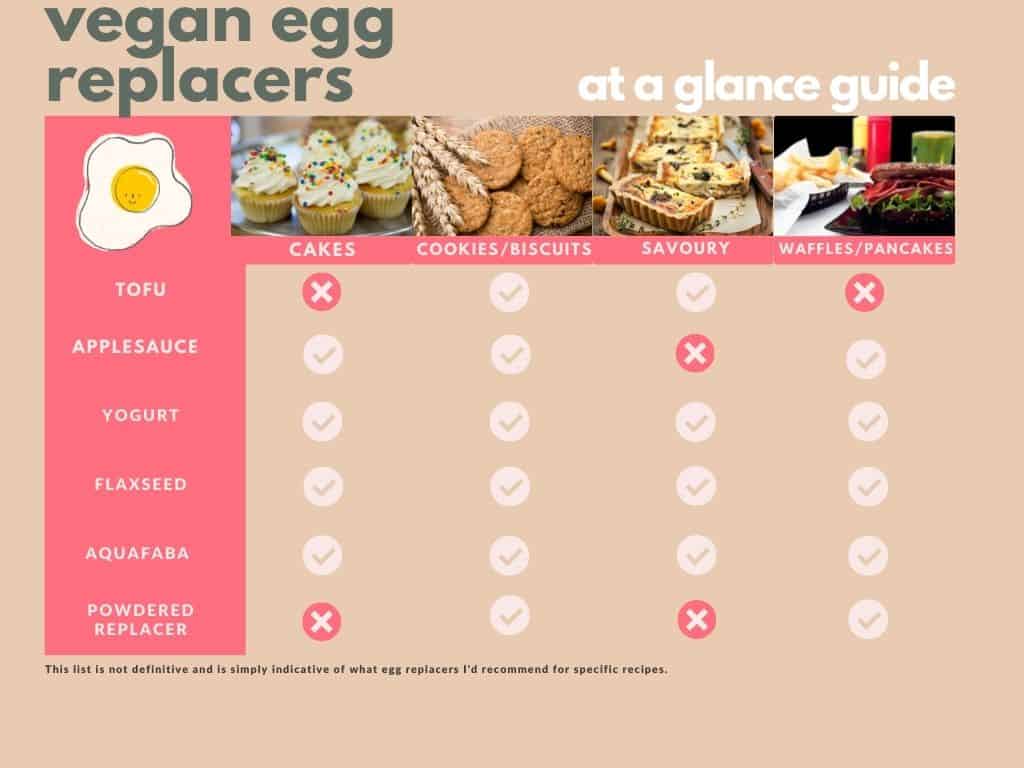
Applesauce
¼ cup = 1 egg
Applesauce is something I rarely use in baking, however, if I do use it in cakes that don’t need to be light and spongy, a fruitcake, carrot cake or brownies, for example.
Applesauce adds moistness, texture and a binding quality in baking. It is often used to replace oil and sweeteners in baking, thus producing a healthier baked product too.
Use unsweetened or make your own.
Try these recipes:
Bananas
¼ cup = 1 egg
These work in much the same as applesauce, adding sweetness, flavour and moistness. Unlike applesauce, bananas can have a strong flavour that can overpower more delicate flavours, so use cautiously.
Try these recipes:
Aquafaba
3 tbsp = 1 whole egg
1 tbsp = 1 egg white
Aquafaba is a controversial product, literally the brine you find in a can of chickpeas! I don’t use it very often as it has to be whipped up into a meringue-style texture to be of any benefit to baking (although some people pour it in to cake batter, using it as egg white). It does produce amazing meringues, although there is often a lingering “beany” smell that needs to be covered up with lots of other flavours.
If you want to create meringues or macarons, or add lift and airiness to bakes, aquafaba is great! I don’t use it much because it is time-consuming, but it makes vegan baking so much more versatile.
Try these recipes:
- Vegan Amaretti Cookies
- Italian Macarons
- Chocolate Pizzelle Cookies
- Vegan American Meringue Buttercream
- Yorkshire Puddings
Powdered Egg Replacers
1 tbsp egg replacer (whisked up with 3 tbsp water) = 1 egg
Powdered egg replacers are generally made by three companies: Bob’s Red Mill, Orgran or Ener-G. They all contain Tapioca and Potato Starch, along with baking powder and, depending on the brand, a few other bits and pieces.
A lot of people dislike using these powdered replacers because they are a less natural product, this is entirely up to you. Read up about the various brands and the ingredients and make your choice. I like Orgran and Bob’s Red Mill brands.
To make up the egg replacer, whisk up 3 tablespoons of cold water, with 1 tablespoon of the powder. You will get a tacky, beige paste, pretty thick, but works really well in cookies where you need crispness. Egg replacers work best as binders, or if you already have a wet batter, and are concerned about making it wetter.
Try these recipes:
Tofu
Tofu works in several ways to replace eggs. You can blend up silken tofu and add to both savoury and sweet ingredients to replicate thick fillings like cheesecake or sauces such as mayonnaise.
I would not use tofu in sponge cake baking, i.e. a cake or muffins or cookies, but it works perfectly in baked cheesecakes (or chilled ones too), giving you a comparable texture.
You can also use firmer tofu to replicate scrambled egg.
Try these recipes
Flaxseed
1 tbsp ground flaxseed (whisked up with 3 tbsp water) = 1 egg
Flaxseed must be ground before it is effective. Once ground, you add to water or a liquid, leave to soak for 5 minutes, and you will be rewarded with a glutinous paste that helps bind ingredients together. Because flax seeds continue to absorb moisture during the cooking process, they will not offer the lightness of other egg replacers.
Always keep ground flaxseed in the fridge, and discard after 3 or 4 days once opened. It is recommended that you grind your own flaxseeds using a coffee grinder if possible.
Try these recipes:
- How to make a flaxseed egg tutorial
- Gluten-Free Barmbrack
- Mocha Oatmeal Cake
- Yeasted Donuts (recipe also uses Aquafaba)
- Gluten Free Bagels
Other alternatives to egg not mentioned above:
- Pumpkin Puree. To be used in similar way to applesauce or banana.
- Chia Seeds, when soaked in water, they work very much like flaxseed, adding a thickening element to recipes. Try this Savory Carrot Tart or these Carrot Cake Muffins.
- Carbonated Water. I have not tried this, and apparently it also works with soda, apparently the bubbles work in a similar way to baking powder. More here.
- Zucchini, again to be used as banana, pumpkin or apple. Try this eggless Zucchini Bread recipe.
- Yogurt. I am a big fan of using yogurt but like all the above egg alternatives, it has drawbacks, notably that it can offer too much moisture to baked goods.
Resources






